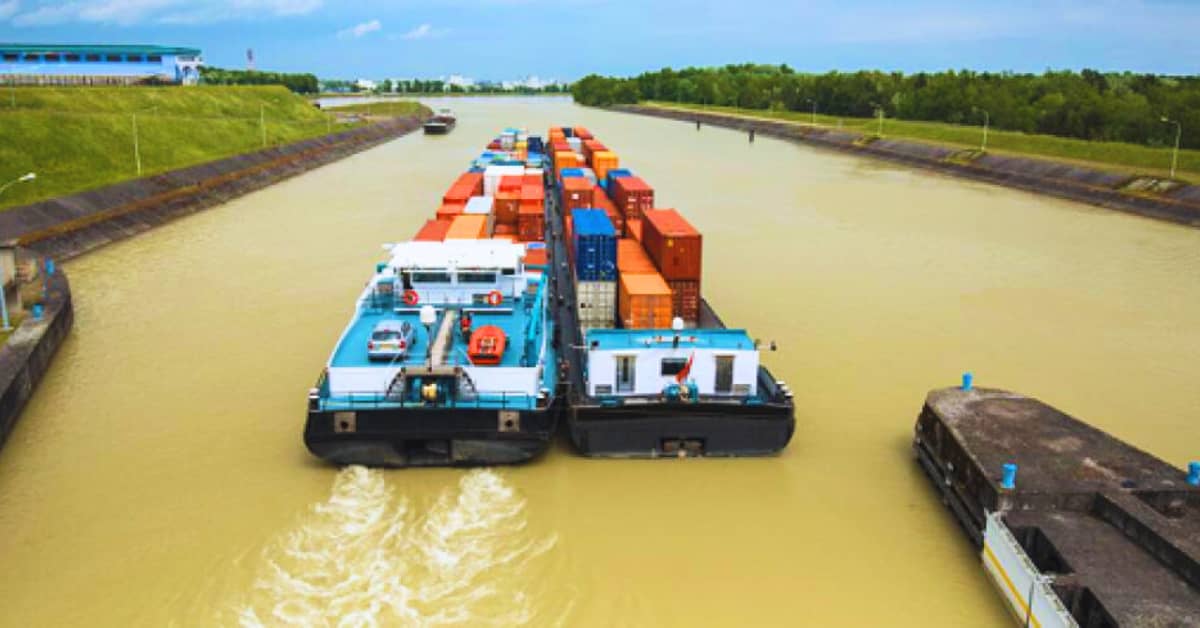Inland waterways are being proposed as a preferred form of transit, which fits with India’s goals of supporting sustainable growth, particularly in the periphery, and lowering its carbon footprint. To realize Prime Minister Narendra Modi’s goal of making India a carbon-neutral nation by 2070, inland waterways would be essential.
Future Highways Will Probably Be Waterways
It wouldn’t be overstating things if we said that transit is to a nation what blood flow is to the human body. A nation’s development has traditionally depended heavily on its transportation system. Given its varied landscape, India offers a wide variety of transportation choices. One of the solutions, and currently the least developed, is transportation across inland waterways.
The government and other forums have held talks over the past ten years comparing our efforts and achievements to those of other nations. Compared to Europe’s 40% and our neighbor Bangladesh’s 35% of trade, the People’s Republic of China conducts 47% of its trade by waterways. Only 3.5% of India’s trade is conducted on waterways. India features a variety of navigable waterways, including rivers, estuaries, streams, canals, and linked canal networks. The government has been promoting integrated waterways as a preferred method of transit with a focus on infrastructure development for quick economic growth. The 2016 Indian National Waterways Act sought to change how India’s transport system operated.
The National Waterways Act requires the federal government to control waterways to improve shipping and navigation in a planned and methodical manner. In the eastern, western, southern, and central parts of India, there are about 15,000 kilometers of navigable waterways. These rivers can be utilized to transport people and goods both within India and to its neighbors. As part of the Atmanirbhar Bharat Mission, these will improve supply chain management, which is essential for India to become a center for global manufacturing.
India is making great efforts to transform its economy through this cost-effective and environmentally friendly method of travel as it works to achieve Atmanirbhar (self-reliance) during Amrit Kaal under the direction of PM Modi. The development of terminal infrastructure for RO-RO and ferry services, policy interventions to encourage the development of the inland waterways sector, the improvement and development of 23 national waterways on a priority basis, improved regional connectivity with Bangladesh, Nepal, Myanmar, and Bhutan, and many other significant initiatives are currently underway.
PM Gati Shakti Plan
The inspiring PM Gati Shakti National Master Plan demonstrates how to implement the spirit of India’s Transformation through Transportation. With $1.5 trillion being spent on infrastructure development, including connectivity for trains, roads, and canals, the effectiveness and cost of logistics are set to be improved, ensuring last-mile connectivity, and opening the way for the smooth movement of people and goods. It is propelled by seven growth engines, including transportation infrastructure for mass transit, airports, ports, and waterways. Dismantling departmental silos is another aspect of this. Gains in the economy will result for consumers, farmers, children, and company owners. It will enhance supply chains and raise the level of international competition for local goods. To encourage the development of multi-modal transportation choices and logistics zones within industrial clusters, the government is exploring a refund on land leases for industrial clusters close to Inland Waterways Authority of India (IWAI) terminals.
The Jal Vikas Marg Project (JVMP), which comprises Arth Ganga, was started with the priority development of National Waterway-1, and it will provide an economic boost of 1,000 crore over the following five years. In addition to promoting trade, improving the local community, and facilitating travel will also assure widespread skill development and increase the capacity of the public and private sectors. According to World Bank research, inland water transportation can move 105 tons per km, compared to 85 tons per km for rail and 24 tons per km for roads. The carbon emission per tons-km for container ships is 32–36 gm, compared to 51–91 gm for road transport vehicles. This implies that inland waterways also require the usage of renewable energy.
The government is dedicated to developing answers that meet future demands. Inland waterway development is a step in the right direction to bring development to the country’s rural areas and ensure an economically and environmentally sound mode of transport that can support India’s rapid economic growth and make it an Atmanirbhar nation by 2047. To prepare for future challenges and aid India’s transformation in the spirit of Sabka Saath, Sabka Vikas, Sabka Vishwas, and Sabka Prayas, the government is committed to working with the public to promote inland waterways as the preferred route of transportation.

